Results 461 to 470 of 12091
Thread: Anandtech News
-
05-10-11, 07:10 PM #461
Anandtech: Google I/O 2011 Keynote: Updates for Phone, Tablet, TV and Accessories
Google’s I/O 2011 keynote may have suffered from a few choice leaks, namely the new Music service and Ice Cream Sandwich announcement, but Google still managed to include some surprises. Android 3.1, the update to Honeycomb, was announced along with a slew of development platforms, including one committed to bringing better introduction of accessories to Android devices of all types, and a home integration platform based on Android.
Hugo Barra, Product Mangement Director of Android at Google, led the initial portion raving about Android stats:
- 100 Million activations with Android
- 36 OEMs, 215 carriers, 450K developers
- 310 devices and in 112 countries
- 400,000 devices activated daily
- 200,000 available apps in Android Market
- 4.5 Billion application installs in Android Market
{gallery 1062}
Android Platform Updates
First up is the update to Honecomb from 3.0 to 3.1. The update, which is being pushed out today to Motorola Xooms on Verizon, includes a number of changes and optimizations, including an improved task switcher, resizable widgets, UI improvements, and USB host and accessory support.
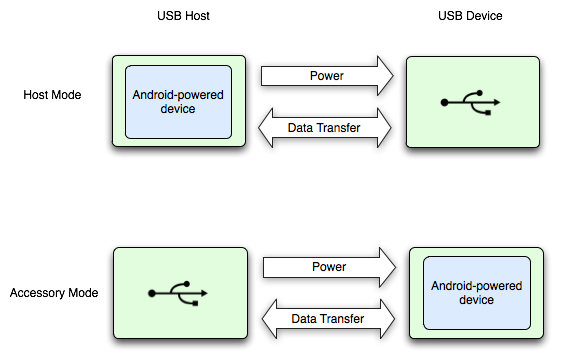
USB host mode support is a huge step forwards for making Android a versatile platform, as it enables Android devices to connect to peripherals like mice, keyboards, mass storage devices, digital cameras, audio devices, hubs, and more. USB host mode also enables gamepad and joystick support, including PS3 and Xbox 360 wired controllers, USB Logitech gamepads, fight sticks, and car controllers. Almost anything that would otherwise present itself as a USB accessory when connected to a PC will work with Android tablets. Going forwards, it's clear that Android 3.1 could quickly become a gaming platform on its own when coupled with a docking station and the existing HDMI support. A demo was shown of a Microsoft Xbox controller synced with a tablet playing a game and the feedback appeared quite fluid with minimal lag.
Android Open Accessory
USB accessory mode is the other side of the new USB support, whereupon connected USB hardware acts as the host. In that mode, the Android device will look for a corresponding application and launch it to allow control of the accessory. For example things like robotics, musical equipment, docks, kiosks, and other accessories are possible. Android 2.3.4 also includes support for the Open Accessory Library, though it's an optional feature for particular device manufacturers to either enable or exclude support for. The Open Accessory Library is an open platform for 3rd party hardware add-ons with no NDAs and no fees to get started.
To demonstrate the openness of the Open Accessory Library, Google showed off an Arduino-based development kit that was demonstrated running an accelerometer-controlled labyrinth game - a physical wooden labyrinth weighing over 5000lbs being controlled by an Android device. As the tablet was tilted in any direction, the labyrinth mimicked the movements. Arduino devices have long been used in home automation and hardware development, and the ease of development for this platform makes it applicable to almost any imaginable device.
Android 3.1 also gets some UI updates to improve intuitiveness and overall refinement of the platform. The launcher is smoother and more fluid, and navigation to and from home screens is easier - tapping home brings you to the last home screen used.
WiFi also gets its own update in Android 3.1, enabling a high-speed WiFi access mode to let applications maintain high-performance WiFi sessions in the background even when the screen is off. This allows for streaming music, video, and voice applications to continue with the screen off, such as when the tablet is docked. HTTP proxy configuration per WiFI profile is also added, in addition to Preferred Network Offload (PNO) support.
There are also a bunch of updates to the standard Google apps in Android 3.1. The browser gets a number of tweaks and UI changes including an extended quick control UI.

The new browser also includes better web standards support. Among those include 3D CSS support, animations, CSS fixed positioning for mobile and desktop sites, and HTML5 video tag support, though it's unclear whether the mobile browser will continue Chrome's policy of only including VP8/WebM support in lieu of H.264. The browser also enables plugins to use hardware acceleration for rendering - this is an obvious shoe-in for enabling greatly improved Flash composition in websites. Likewise page zoom and rendering performance is "dramatically improved," likely due to some hardware acceleration love.
The honeycomb update is being pushed out to Motorola Xooms on Verizon, and will arrive on the Galaxy Tab 10.1 soon as well. Android 3.1 will also make its way to Google TV. Apps for Google TV will use the same Honeycomb SDK. Sony, Vizio, Logitech, and Samsung will carry 3.1 compatible devices.
Ice Cream Sandwich
Google also officially announced the name of the next major version of Android, which will unify all of Google's platforms: Ice Cream Sandwich.
Ice Cream Sandwich will be the release that unifies the Android platform across both tablets and smartphones in the future. The release will unify the experience by creating one consistent UI for end-users across smartphones and tablets, and and make things for developers thanks to unification under one app framework. Creating a developer environment that is entirely device independent would be a huge advance, taking the burden of optimizing apps for a particular type of device away from the developer and into the OS itself. This is an absolute must if the same apps are to be available on small, medium and large form factor screens.
"One OS Everywhere" will feature a start of the art UI, advanced app frameworks, and open source APIs. A demo was shown of two users talking and a usb camera connected to a tablet automatically adjusting on the person speaking. The APIs will be deployed later this year in 2011.
Movie Rentals & Music Beta
There’s no denying that Android’s product bears a striking similarity to the product Amazon announced recently. Google’s music offering seems to be competing in features and scale. Instant mix features are being announced, similar to iTunes’ Genius function, but more exciting was the announcement that users will be able to upload 20,000 songs, at least during the beta. Details are forthcoming and once we know more we will share it.
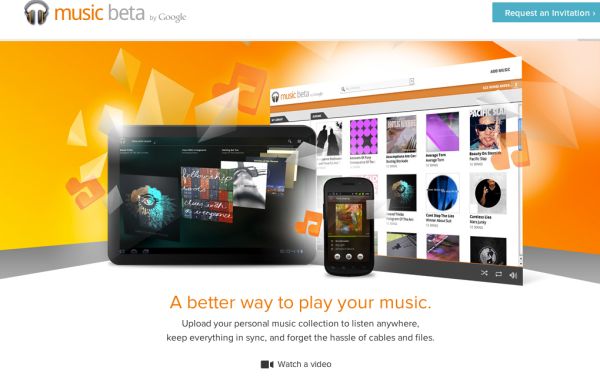
There was much speculation over whether Google TV, announced at I/O 2010, would have any place at this year’s event, and while not much time was devoted to it during the keynote, the answer ended up being, yes. Honeycomb 3.1 will tie together the tablet and TV platforms for Google, a logical step when you consider that both are, at present, optimized for content consumption and video based communications. This, of course, also means that the Android Market will be coming to Google TV, at last. Google will not be leaving early adopters behind, though it announced that Samsung, Logitech and Sony would all be premiering new Google TV models in the coming months, it committed to providing the update to all devices already in the channel.
With the rise of Amazon's Cloud Drive technology already in full swing, Google stepped up to the plate and announced movie rentals & music beta. The beta will be released primarily to US based customers only and will later branch internationally.

The Movie rental service is going live now, and will allow 30-day rentals for as low as $1.99. Google cited a library of 1000’s of titles and garnered lots of cheers when it announced that in the coming weeks they will make the new app and service available to users of Andoid 2.2 and up. This announcement ties in nicely to a mirroring announcement from YouTube yesterday, and should make updated Google TV’s that much more appealing. Quality of the rentals should be adequate on tablets and phones should be without question, but it remains how the streams fare on bigger screens, particularly when output through Google TV.
Today marks the introduction of Music Beta by Google. The app will run on both PC and Mac and allow importing of iTunes and Windows music folders. A nice feature is the inclusion of playlists, albums, and artist meta information support. Searching for a song is a breeze and the new machine learning algorithm they are sporting will generate playlists as it literally listens to your music. Offline music is a promising feature also because it will allow users to cache music recently played and have access to songs.
Google has optimized the way cloud-based streaming works both on Froyo and Gingerbread. The UI for handhelds is customized easier for swiping between artists, playlists, and menu selections.
The app will be launching in beta today and only to US users. Users can add up to 20,000 songs in their library and will currently be free while in beta. Visit http://music.google.com/ to get started.
Android 2.2 or higher devices can run this application.
Google is taking a stand with the Open Handset Alliance for how quickly they will get the latest updates pushed over to user devices. Verizon, HTC, Samsung, Sprint, Sony Ericsson, LG Tmobile, Vodafone, Motorola, AT&T, and Google are the participating players. New devices will receive the latest software updates for 18 months after they are released if the hardware allows. Better for devices and users overall.
Android at Home Framework
For you home improvement readers who have ever worked with light fixtures, this new part of the framework looks quite promising! The floor lamps in the keynote room were integrated using the latest Ice Cream Sandwich update and were controlled live while playing a game. Quite impressive actually.
The keystone of this platform will be the low power wireless protocol that will integrate devices through Android for wireless control. The demonstration for this included manipulation of soon-to-be released LED lights that integrate the protocol. This initiative would push for integration inclusive of kitchen appliances, security and HVAC systems and media devices. Audio output was highlighted with what’s currently known as Project Tungsten. Currently demonstrated as an edge lit black cube that connects through Android@Home to the cloud and integrates with the new Music service to allow music streaming through connected speakers. Individual Tungsten devices can be manipulated individually giving Sonos-like levels of control. Though it was likely not a live demo, Google demonstrated a second Tungsten device that included NFC reading to allow users to add music to their library by tapping NFC-tagged purchased CD’s by simply tapping them to the device. A second tap begins playing the CD. If Project Tungsten takes off as a commercial product it could be the trojan horse that leads people to acquire other Android@Home devices. This will either be another home automation flash in the pan, or a rather successful initiative to fill and expand a niche market.
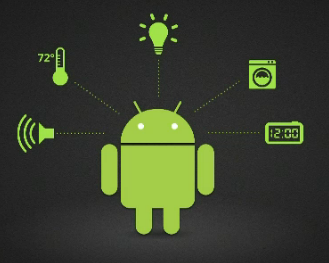
The exciting part for developers are the opportunities this new SDK presents as we truly see a nice marriage between software and hardware. The bar has been raised and the future of creativity will hopefully yield some highly competitive and ground breaking applications in the Android Market. More coverage will follow as day two unfolds tomorrow. Stay tuned.
More...
-
05-11-11, 02:50 AM #462
Anandtech: Intel Z68 Chipset & Smart Response Technology (SSD Caching) Review
The problem with Sandy Bridge was simple: if you wanted to use Intel's integrated graphics, you had to buy a motherboard based on an H-series chipset. Unfortunately, Intel's H-series chipsets don't let you overclock the CPU or memory - only the integrated GPU. If you want to overclock the CPU and/or memory, you need a P-series chipset - which doesn't support Sandy Bridge's on-die GPU. Intel effectively forced overclockers to buy discrete GPUs from AMD or NVIDIA, even if they didn't need the added GPU power.
Intel's Z68 chipset is designed to address this shortcoming, as well as be the introductory vehicle for Intel's brand new SSD caching feature called Smart Response Technology. Read on as we look at Z68 and try to figure out if SRT is the holy grail of delivering SSD performance without sacrificing HDD capacity.
More...
-
05-11-11, 03:30 AM #463
Anandtech: ASUS P8Z68-V PRO Review: Our First Z68 Motherboard
ASUS P8Z68-V PRO: Friend or Foe?
Yet another 6-series chipset is upon us from Intel. In terms of just consumer level desktop Cougar Point chipsets, this makes the seventh on offer - the Z68 is being marketed as the logical progression from both P67 and H67 for consumers. Z68 introduces a host of new features, including combined overclocking of the CPU and integrated Intel HD Graphics, SSD caching, and use of integrated GPU features such as QuickSync while still maintaining full discrete GPU usage in true 3D applications. ASUS have kindly supplied us with their P8Z68-V PRO model, which should retail at $210, and is a small price premium as an update from the P8P67 PRO model we looked at previously.
More...
-
05-11-11, 03:10 PM #464
Anandtech: Google IO 2011 Chrome OS Highlights
We are at Google IO 2011 and the focus today is on the Chrome browser and new Chromebooks notebooks running Chrome OS. Chromebooks will be initially featured by Samsung and Acer and offered in two flavors of wifi or wifi + 3G. Speed has always been at the heart of Google and their approach towards a seamless web experience lies within their cloud network. Sundar Pichai, Senior VP of Chrome, mentioned there were 70 million active users of Chrome in 2010 and more than doubled in 2011 with 160 million.
Google is now adopting a 6 week release cycle in their software updates for Chrome and this is fantastic as users will see even better performance with HTML5 and WebGL support. Previous web animations that relied upon drawing on the web canvas and running on software are predicted to run at almost 100x faster by using WebGL instead. Google is focused on GPU acceleration within Chrome and a demo of the speed with animations clearly showed how 1000 objects easily were rendered.
{gallery 1065}
Chrome Web Store
A big break for developers is the new 5% fee for web store applications. There are no fixed, monthly, signup, or licensing fees. Developers are encouraged to deploy more applicaitons and Google will help cater by expanding the Chrome web store and branching out to 41 languages. The popular game Angry Birds was demonstrated with it running within Chrome's browser and it provides a special Chrome level for your enjoyment. It is available starting today.
Chromebook
I had a few moments to talk with Sundar and some of his key points were the design decisions associated with the architecture behind Chrome OS. Sundar said, "We wanted to create fundamentally the most out of the box experience with minimal user input to get started."
These chromebooks are not the typical notebook computer. All of a user's photos, music, games, apps, and documents are available and everything resides within Google's cloud. Google Apps will indeed be an add-on but Gmail, Google Docs, and Google Calendar are included.
Chromebook has an instant on start up (roughly 8 seconds), always connected, an all day battery, access your web anywhere, gets better over time, and built with security in mind. A security overview can be found here http://www.chromium.org/chromium-os/...urity-overview. Samsung and Acer will be the initial two notebook providers as stated earlier. Verizon will be the wireless provider within the US. The program stems from their original CR-48 pilot, and now with all that rich user feedback, Google is ramped for their next product.
Chromebooks are supposed to get better and richer over time. We tend to see the degradation of a computer's performance as apps are installed and updates have to be managed, drivers updated, and a slew of other problematic hurdles. Chromebooks take care of all this behind the scenes with automatically delivering the most recent version directly to your notebook.
The release date for Chromebooks is June 15 in the US, UK, Germany, Netherlands, Spain, and Italy. We hope to see more countries released in the latter portion of 2011. Amazon and Best Buy will be the carriers.
Samsung's Series 5 notebooks will be introduced in 2 versions:
- $429 Wifi Only
- $499 Wifi + 3G
The Acer model will start at $349 and up.
Google Pricing Model for Chromebooks
Google is making a heavy push towards the corporate world by targeting a cost effective model.
Businesses are targeted with a competitive price of $28/user monthly subscription and educational institutions and government clients starting at $20/user monthly.
Chromebooks for business will deploy a web console, support, warranty & replacements, and hardware auto-updates. IT admins will be empowered with a robust configuration panel that will allow adding of users, apps, and granular control over policies and other access control lists.
For more information visit http://www.google.com/chromebook.
More...
-
05-11-11, 11:10 PM #465
Anandtech: DigitalStorm Enix: Phenomenal Cosmic Power, Itty Bitty Living Space
Just recently we had a chance to lay hands on SilverStone's FT03 enclosure, and it was impressive enough to earn a Bronze Editors' Choice award. It wasn't the quietest case we've ever reviewed, but it had strong thermal qualities and a slick-looking design. Now DigitalStorm has taken SilverStone's eye-catching little number, custom-painted the grills, and turned it into a double-shoebox-sized monster. The Enix we're looking at today boasts the highest overclock on an Intel Core i7-2600K we've yet seen from a system vendor and pairs it with not one but two EVGA GeForce GTX 580 cards.
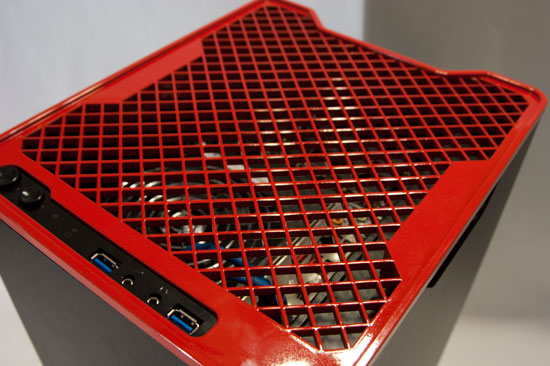
The Enix will naturally be fast given those components, but how does it perform in the areas of thermals and acoustics? Read on to find out.
More...
-
05-12-11, 02:10 AM #466
Anandtech: VIA's QuadCore: Nano Gets Bigger
Two days ago I flew out to VIA's Centaur headquarters in Austin, Texas to be briefed on a new CPU. When I wrote about VIA's Dual-Core Nano I expected the next time we heard from VIA about CPUs to be about its next-generation microprocessor architecture. While Nano still holds a performance advantage over Atom and Bobcat, it's still missing a number of key architectural innovations that both Intel and AMD have adopted in their current generation hardware (e.g. GPU integration, power gating).
Much to my surprise, the meeting wasn't about VIA's next-generation microprocessor architecture but rather the last hurrah for Nano: a quad-core version simply called the VIA QuadCore.
Read on for details on VIA's first quad-core CPU.
More...
-
05-12-11, 05:40 AM #467
Anandtech: HTC HD7: Now With NoDo
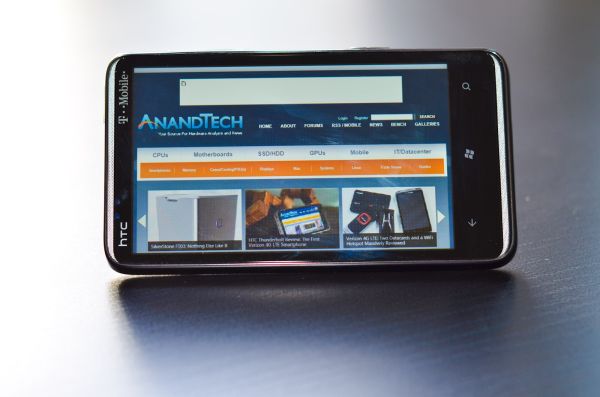
When Microsoft launched Windows Phone 7 late last year, it was readily evident that they had a solid platform on their hands, but it was missing some critical details. Chief among them? Copy-and-paste, bringing back a frequent grievance from the early iPhone days. The platform’s first update, codenamed “NoDo” (there’s a story behind that), is now out, with copy-paste support in tow, along with much improved application loading and some general performance tune-ups in the UI.
At the same time, we decided to take a look at HTC’s HD7, since it’s been my day-to-day phone for a couple of months now. It’s still the only Windows Phone you’ll find in a T-Mobile store, so it’s worth taking a look at, especially now that a very similar variant is due to hit AT&T in the coming weeks.
Read on for our thoughts on both the HD7 and Microsoft’s new update to the Windows Phone platform.
More...
-
05-12-11, 05:30 PM #468
Anandtech: Intel's Silvermont: A New Atom Architecture
Brooke Crothers broke a very important story today - he published the name Silvermont. Atom's first incarnation came to us in 2008 as a Pentium-like dual-issue in-order microprocessor. The CPU core was named Bonnell, after the tallest point in Austin at around 750 feet. Small mountain, small core. Get it?
Bonnell and the original Atom were developed on a 5-year cadence, similar to how Intel ran things prior to the Core 2 revolution (the P6 to Netburst/Pentium 4 move took 5 years). With the original chip out in 2008, five more years would put the next major architecture shift at 2013, which happens to be exactly when the Cnet report mentions Silvermont will be introduced.
When I first met with the Atom design team they mentioned that given the power budget and manufacturing process, the Bonnell design would be in-order. You get a huge performance boost from going to an out-of-order architecture, but with it comes a pretty significant die area and power penalty. I argued that eventually Intel would have to consider taking Atom out of order, but the architects responded that Atom was married to its in-order design for 5 years.
and_PlatformControllerHub_package2_sm.jpg)
Intel's Moorestown - same Atom core, just more integrated
Since 2008, Atom hasn't had any core architecture changes. Sure Intel integrated the GPU and memory controller, however the CPU still communicates with both of them over an aging FSB. The CPU itself remains mostly unchanged from what we first saw in 2008. Even Intel's 32nm Atom due out by the end of this year doesn't change its architecture, this is the same dual-issue in-order core that we've been covering since day 1. The 32nm version just runs a bit quicker and is paired with a beefier GPU.
Silvermont however changes everything. It is the first new redesign of the Atom architecture and it marks the beginning of Atom being on a tick-tock cadence. Say goodbye to 5 year updates, say hello to a new architecture every 2 years. Read on for more!
More...
-
05-13-11, 02:10 AM #469
Anandtech: Z68 SSD Caching with Corsair's F40 SandForce SSD
I have to admit that Intel's Z68 launch was somewhat anti-climactic for me. It was the chipset we all wanted when Sandy Bridge first arrived, but now four months after Sandy Bridge showed up there isn't all that much to be excited about - save for one feature of course: Smart Response Technology (aka SSD caching). The premise is borrowed from how SSDs are sometimes used in the enterprise space: put a small, fast SSD in front of a large array of storage and use it to cache both reads and writes. This is ultimately how the memory hierarchy works - hide the latency of larger, cheaper storage by caching frequently used data in much faster, but more expensive storage.
I believe there's a real future with SSD caching, however the technology needs to go mainstream. It needs to be available on all chipsets, something we won't see until next year with Ivy Bridge. Even then, there's another hurdle: the price of the SSD cache.
For $110 today you can either get a 20GB Larson Creek drive from Intel, or a 40GB SF-1200 based SSD from Corsair. Given how well SandForce's SSDs perform by alone, I wondered how one would stack up as a SSD cache. Read on to find out!
More...
-
05-13-11, 10:00 PM #470
Anandtech: CyberPower's X6-9300 and MSI's GT680R: Fighting for Your Mobile Gaming Dol
Choosing a laptop can be a pretty confusing experience, because even if you have a good idea of what features and components you’d like, finding a laptop with them isn’t always easy. Once you do find the right features, you have to decide if you like the way the notebook looks, and in the mobile gaming world that often means living with a lot of gloss and bling, or going for the polar opposite with a dull black plastic shell. We have two gaming notebooks that happen to fall squarely into those categories, but there’s a lot more to the packages than that simple description.
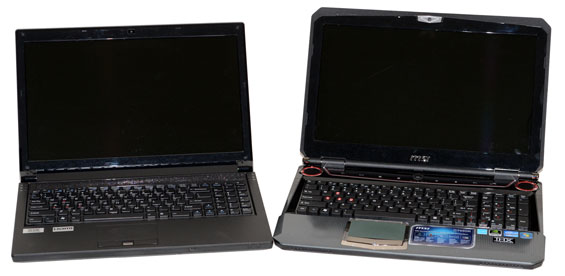
Can MSI or CyberPower (Clevo) put together a midrange notebook that will wow us and walk away with your gaming dollar? If not, where do they come up short? Read on to find out.
More...
Thread Information
Users Browsing this Thread
There are currently 19 users browsing this thread. (0 members and 19 guests)





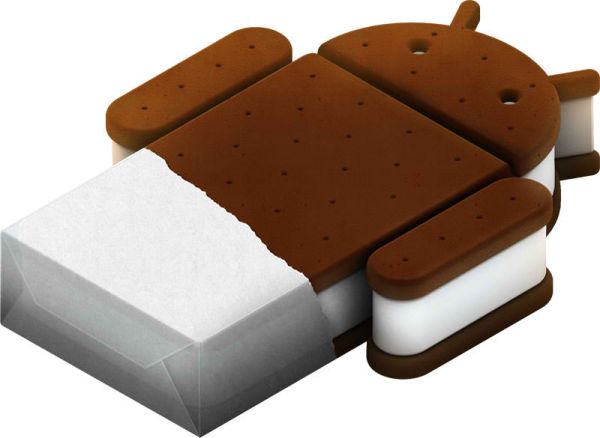

 Quote
Quote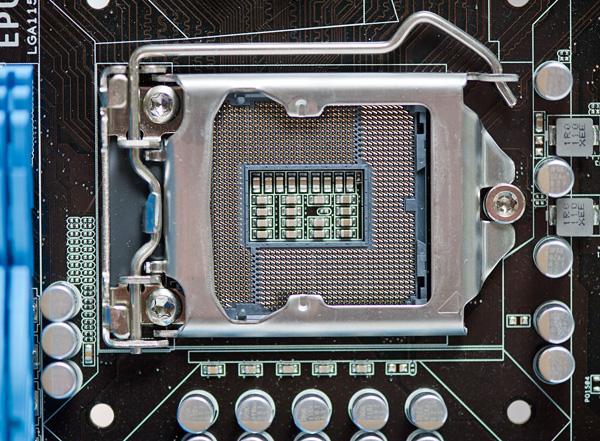
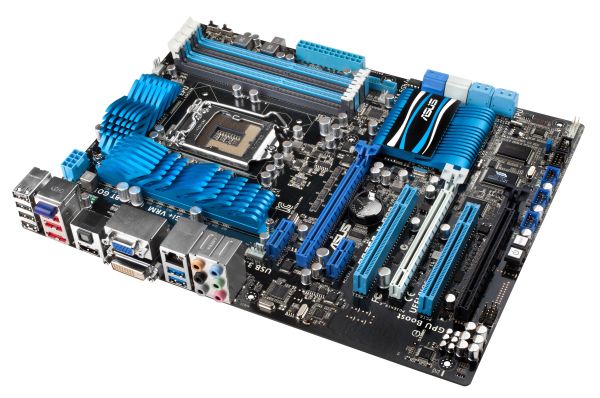


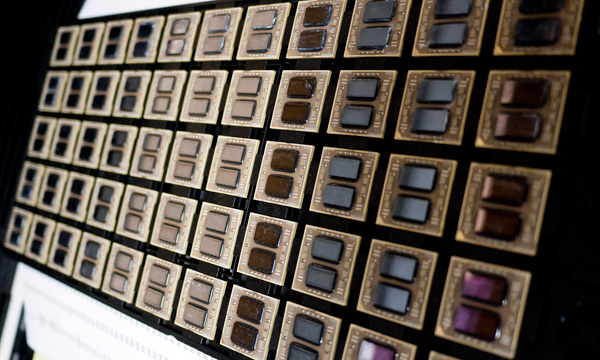

















Bookmarks